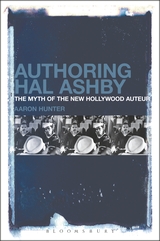(Originally published 2 October 2014. Special thanks to both Catcher in the Reel and Martha Shearer for permission to repost.)
By Martha Shearer
This article is part of an ongoing project on the topic of web series that will discuss a few key examples over the course of the summer.
For this entry, I am very happy to turn things over to Martha Shearer. Martha first switched me on to The Lizzie Bennet Diaries, so I thought, who better to take the reins in discussing the series.
May include mild spoilers.
Over the course of its run from April 2012 to March 2013, The Lizzie Bennet Diaries became one of the most visibly successful web series, going on to win an Emmy last year. It shares with the other web series featured so far in this series the use of direct address and also made extensive use of transmedia storytelling: alongside the primary web series (its protagonist Lizzie’s video diaries) are the characters’ twitters and tumblrs and other characters’ video series and vlogs. But while it shares the faux-vlog style with lonelygirl15 andThe Guild, it differs significantly in its source material: Jane Austen’s Pride and Prejudice. Lizzie Bennet is an impoverished graduate student who starts a vlog about her life at home with her parents and sisters that begins with the arrival in her small town of wealthy medical student Bing Lee and his friend William Darcy. The Lizzie Bennet Diaries is interesting as an adaptation both in its form and in the way it shifts the novel’s economic concerns to a contemporary recessionary context. But it’s also interesting as a web series, because by making Elizabeth Bennet a grad student/vlogger, it’s also a web series about digital media. The fake vlog effect isn’t just stylistic, an effort to establish a connection with the audience by mimicking the style of something ‘real’, Lizzie’s vlogging is also part of the narrative itself. We’re continually reminded of who knows about her videos and dramatic moments come when people discover them. But she also aspires to a career in digital media and her videos end up becoming a kind of showcase for her understanding of the medium, while the series itself becomes a showcase for web video as both a form and an industry. So what I’m going to focus on here is how it depicts digital media and how in doing so it updates the novel’s concern with the future security of its heroines. Continue reading










